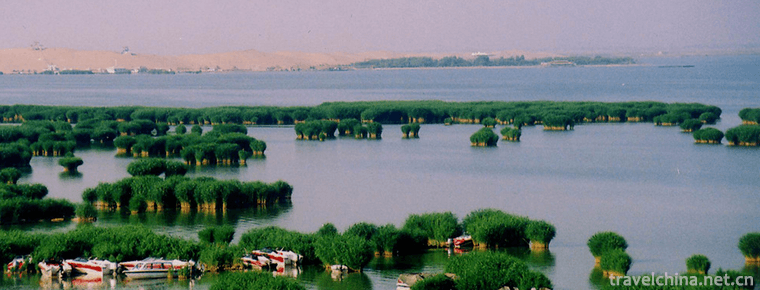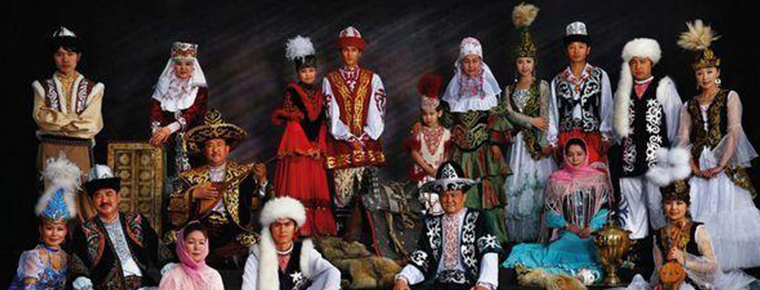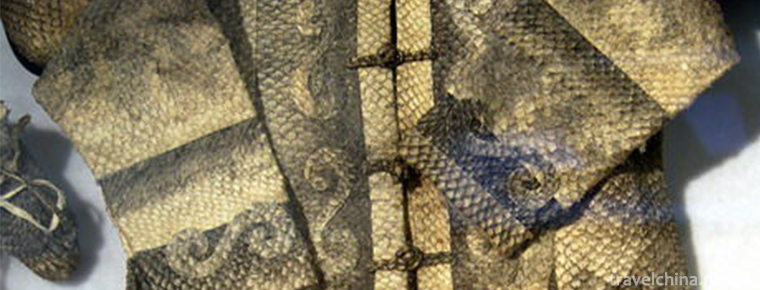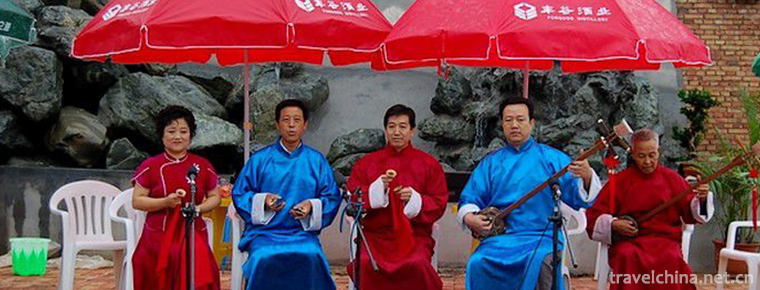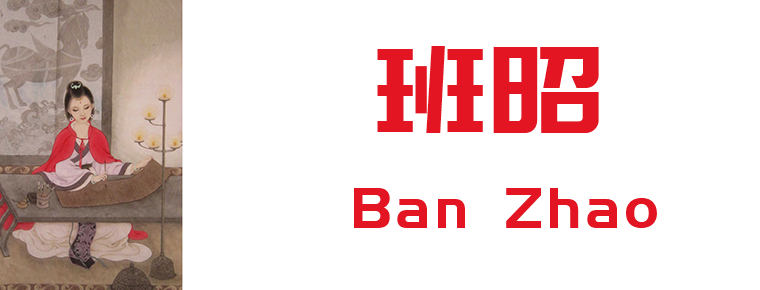Multi voice Folk Songs of Hani Nationality
Multi voice Folk Songs of Hani Nationality
Hani multi-voice folk songs are popular in several Hani villages in the eastern part of Azahe Township, Honghe County, with Puchun Village as the center. Their natural environment is closed and traffic is inconvenient. Historically, they have been the jurisdiction of the chief slag officer. The single ethnic distribution pattern and the political and historical background of the Tusi regime's long-term rule have prevented the foreign heterogeneous cultures from penetrating into the Puchun area, so that the original ecological traditional cultures such as Hani multi-voice music can be systematically preserved. This folk song is generally divided into two types: instrumental accompaniment and non-instrumental accompaniment. The singing content is based on the original "Yangyang Mountain Song", while the other "Orchid Tower" and "Love Song" are attached. Compared with other Hani folk songs, the multi-voice folk songs have both generality and individuality.
On May 20, 2006, Hani multi-voice folk songs were listed in the first batch of national intangible cultural heritage list with the approval of the State Council.
historical origin
Hani multi-voice folk songs are popular in several Hani villages in the eastern part of Azahe Township, Honghe County, with Puchun Village as the center. Their natural environment is closed and traffic is inconvenient. Historically, they have been the jurisdiction of the chief slag officer.
artistic characteristics
The multi-voice folk songs of the Hani nationality include the praise of labor, love and the beautiful scenery of the countryside. The way of singing can be divided into two types: instrumental accompaniment and vocal assistant tune without instrumental accompaniment. Hani multi-voice folk song singing occasions are diverse, terraces, mountains and villages can be its performance space. The accompaniment instruments are all made by folk singers themselves, and the three strings and the small erhu are only used in Puchun Village. The Lyric structure of multi-voice folk songs of Hani nationality consists of three parts: opening words, theme words and helping words. Its musical form shows distinct national and regional characteristics in terms of syllable structure, mode sequence, mode color, mode combination and multi-voice part composition.
Representative works
There are "My Place Az" (planting Yangshan Song) and "Love Song" and so on.
Inheritance value
The multi-voice folk songs of the Hani nationality embody the musical wisdom and talent of the Hani nationality, and show the unique singing talent of the Hani nationality. During the field investigation, experts have collected eight original forms of Hani multi-voice folk songs, which are extremely rare and of high historical, scientific and artistic value. Hani multi-voice folk song is the treasure of Chinese national music, which has attracted wide attention from the music circles at home and abroad. Hani multi-voice folk songs and social production, especially accompanied by terraced rice farming, are important materials for the study of Hani culture and its national character and aesthetic concept.
The multi-voice folk songs of Hani nationality are deeply hidden in the hinterland of Ailaoshan Mountains. Their inheritance is totally dependent on folk singers. Although it has attracted wide attention from experts in music and anthropology, they have not been protected systematically and systematically for a long time. The number of inheritors with comprehensive quality of multi-voice music is decreasing day by day. This valuable folk music form is on the verge of losing its inheritance.
The state attaches great importance to the protection of intangible cultural heritage. On May 20, 2006, Hani multi-voice folk songs were approved by the State Council and listed in the first batch of national intangible cultural heritage list.


-
Jiuzhaigou Valley Scenic and Historic Interest Area
Jiuzhaigou: World Natural Heritage, National Key Scenic Spots, National AAAAA Class Tourist Scenic Spots, National Nature Reserves, National Geoparks, World Biosphere Reserve Network, is the first nat.
Views: 201 Time 2018-10-13 -
Huangguoshu Waterfalls Scenic Area
Huangguoshu Scenic Spot is a key national scenic spot, located in southwest Guizhou Province, 128 kilometers away from Guiyang City, the capital of Guizhou Province.
Views: 167 Time 2018-12-12 -
Shahu Sand Lake tourist attraction
In 1996, Shahu Lake was listed as one of the 35 trump-card scenic spots in China. In 2000, Shahu Lake was designated as "National Civilized Tourism Scenic Spot" by the Central Office of Spir.
Views: 152 Time 2018-12-12 -
Kazakh medicine
Since the pre-Qin Dynasty, the Kazakh people have multiplied and lived in the vast grasslands and some agricultural areas in Northwest China. They have accumulated rich medical experience in productio.
Views: 390 Time 2019-05-02 -
Fish Skin Making Techniques of Hezhe Nationality
Fish skin making techniques of Hezhe nationality, traditional handicraft techniques of Raohe and Fuyuan in Heilongjiang Province, are one of the national intangible cultural heritages..
Views: 160 Time 2019-05-03 -
The Craft of Juchunyuan Buddha Jumping Wall
"Buddha Jumping Wall" is the first famous dish in Fujian cuisine. It is well-known at home and abroad for its exquisite materials, unique preparation method and strong flavor.
Views: 117 Time 2019-05-08 -
Qin an Xiaoqu
Qin'an Xiaoqu, also known as the old tune of Qin'an, is one of the national intangible cultural heritages. It is an ancient traditional folk art variety formed and mainly popular in Qin'an and other c.
Views: 175 Time 2019-06-10 -
Making Skills of Sheng Xifu Leather Cap
Shengxifu leather cap production skills need to go through the whole process from matching, picking, blowing, brushing, flat leather, shaving, hand needle sewing to machine sewing, and finally complet.
Views: 134 Time 2019-06-14 -
Ban Zhao
Ban Zhao (about 45 years - about 117 years), also known as Ji, the word Hui ban. Fufeng An Ling (now northeast of Xianyang, Shaanxi), a historian and a writer of Eastern Han Dynasty. historian Ban Bi .
Views: 287 Time 2019-09-11 -
Communication University Of China
Communication University of China ( Communication University of China Referred to as "Zhong Chuan", located in the capital city. Beijing Yes. Ministry of Education of the People's Republic o.
Views: 123 Time 2019-12-03 -
Panzhihuas primary industry
In 2018, the total output value of agriculture, forestry, animal husbandry and fishery in Panzhihua was 7.027 billion yuan, an increase of 4.2%. Among them, agricultural output value was 4.434 billion yuan, an increase of 5.2%; forestry output value was 108 million yuan, an increase.
Views: 324 Time 2020-12-14 -
Meishan population
At the end of 2019, the total registered residence population was 3 million 422 thousand and 600, of which 1 million 194 thousand and 900 were urban population. At the end of the year, there were 2.995 million permanent residents, including 1.433 million urban.
Views: 333 Time 2020-12-18


